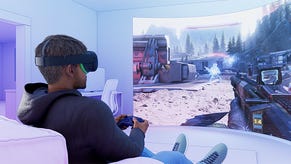Kutaragi sheds more light on PSP battery life
Hopes for future optimisations, but admits graphically intensive games like Ridge Racer will provide less than the four to six hour figure quoted.
Question marks over the 'real-world' battery life of the PSP remained today, following comments made by Sony Computer Entertainment's Ken Kutaragi in a recent interview with Impress PC Watch which add weight to fears that the handheld console's lithium battery is currently ill-equipped to handle the more graphically intensive games for more than a couple of hours.
Sony released detailed specifications last week, which revealed that the company expects the average battery life of the handheld console to be between four to six hours, but added the proviso that these figures were based on headphones being attached, wireless LAN not in use and "display luminance set to maximum (180 cd/m2) and minimum (80 cd/m2)". As yet Sony has yet to release battery life data based on networked gaming, and if the stereo speakers are in use - but many expect that figure to be far closer to the two hour figure widely quoted.
Tellingly, Kutaragi admitted: "A puzzle game will last longer, but Ridge Racer will probably be shorter than that." An interesting comment that is a logical, but obvious observation that any game that maxes the PSP's capabilities out will cost the battery life dear. Anyone expecting game which constantly stream data off the disc, such as Grand Theft Auto or Sony's own The Getaway will most likely be disappointed, with Sony keen to ensure all games pass stringent battery life tests before being released.
However, while initial battery concerns are a very real issue in the early days of the system, Kutaragi goes on to predict that "In the future, we'd like a single charge to last for a flight between Narita and New York," which to the rest of us means about 14 hours.
He also used one of Sony's previous handheld successes - the Walkman -as an example of how optimisations refine battery use over time. Without specifically mentioning improvements to the battery itself, Kutaragi insisted that developers would eventually find ways to optimise CPU use and memory management to save on the battery, and that future revisions of the PSP would inevitably reduce power consumption, noting that the first PSPs would contain chips manufactured using a 90-nanometer process, while future generations would be made using the small, less power intensive 65-nanometer process.
However, much of this is all ifs and buts, and while this will undoubtedly happen, there remains a big question mark over what the first gen PSPs are capable of, and whether it proves to be a deal breaker for those who intend to use the device on the move for extended periods.
Meanwhile, he also mentioned the inevitable increase in removable RAM capacity. Currently the maximum PSP Memory Stick DUO capacity for the PSP is 1GB, but in future this will undoubtedly rise to much bigger capacities - although not until future revisions are released at an unspecified point in the future.

.png?width=291&height=164&fit=crop&quality=80&format=jpg&auto=webp)






